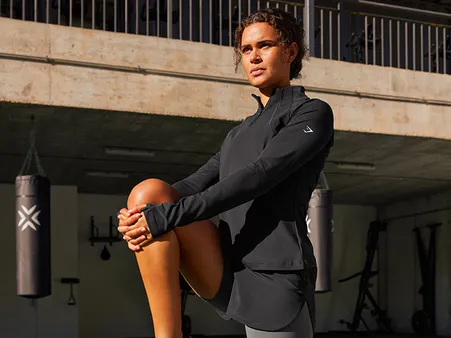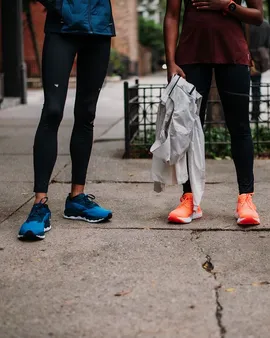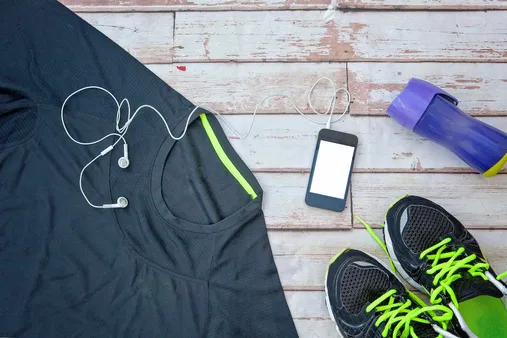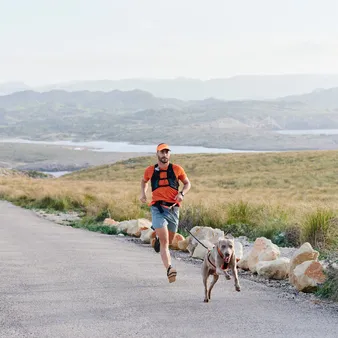Table of Contents
When it comes to running, having the best clothing and apparel can make all the difference. The right gear can help you stay comfortable, focused, and performing at your peak. At Kizworld, we understand the importance of quality running attire, which is why we've compiled this comprehensive guide to help you choose The best running clothing and apparel for your needs. Whether you're a seasoned runner or just starting out, our insights will ensure you find the perfect gear to elevate your running experience.
The Best Running Clothing and Apparel: Elevate Your Runs with Style and Performance
I. The Best Running Clothing and Apparel for Comfort and Performance
The Best Running Clothing and Apparel for Comfort and Performance
Breathable Fabrics for Optimal Comfort
When it comes to running, comfort is key. The right clothing can help you stay cool and dry, even on the hottest days. Look for fabrics that are breathable and wick away sweat, such as polyester or nylon. Avoid cotton, as it absorbs sweat and can make you feel clammy and uncomfortable.
- Polyester: A synthetic fabric that is lightweight, breathable, and quick-drying.
- Nylon: Another synthetic fabric that is strong, durable, and moisture-wicking.
- Wool: A natural fiber that is breathable, moisture-wicking, and insulating.
Layering for Different Temperatures
The weather can be unpredictable, so it's important to dress in layers so you can adjust your clothing as needed. Start with a base layer of a breathable fabric, such as a running shirt or tank top. On cooler days, add a mid-layer, such as a long-sleeve shirt or jacket. And on the coldest days, top it off with an outer layer, such as a windbreaker or rain jacket.
Temperature | Base Layer | Mid-Layer | Outer Layer |
Warm (60°F and above) | Running shirt or tank top | N/A | N/A |
Cool (40°F to 60°F) | Running shirt or tank top | Long-sleeve shirt or jacket | N/A |
Cold (30°F to 40°F) | Running shirt or tank top | Long-sleeve shirt or jacket | Windbreaker or rain jacket |
Very Cold (below 30°F) | Running shirt or tank top | Long-sleeve shirt or jacket | Insulated jacket |
Proper Fit for Optimal Performance
The fit of your running clothing is also important. Clothes that are too tight can restrict your movement and cause chafing. Clothes that are too loose can flap in the wind and be distracting. Look for clothing that fits snugly but not too tightly. You should be able to move freely and comfortably.
By following these tips, you can choose the best running clothing and apparel for comfort and performance. With the right clothing, you'll be able to stay comfortable and focused on your run, no matter the weather.
Check out our related posts on The Best Running Shoes for Different Types of Runners and The Best Running Accessories for more tips on how to get the most out of your running experience.
II. Choosing the Right Running Clothes for Your Needs
Choosing the Right Running Clothes for Your Needs
Consider the Climate
- For warm weather:Lightweight, breathable fabrics that wick away sweat.
- For cold weather:Layers of clothing that you can add or remove as needed.
- For wet weather:Waterproof and windproof materials that will keep you dry.
Choose the Right Fit
Running clothes should fit snugly but not too tightly. You want to be able to move freely and comfortably without feeling restricted.
Too loose | Too tight | Just right |
|---|---|---|
|
|
|
Choose the Right Features
Consider the features that are important to you, such as:
- Pockets for storing keys, gels, or other small items.
- Reflective material for visibility in low-light conditions.
- Anti-odor technology to help keep you fresh.
- UPF protection to block the sun's harmful rays.
Choose Quality Materials
Running clothes made from high-quality materials will last longer and perform better than those made from cheap materials.
- Look for fabrics that are:
- Breathable
- Wicking
- Durable
- Avoid fabrics that are:
- Too heavy
- Too thin
- Non-breathable
Try on Clothes Before You Buy Them
It's important to try on running clothes before you buy them to make sure they fit properly and that you're comfortable in them. If you're shopping online, be sure to read the reviews and check the size chart.
III. Essential Running Clothing and Apparel for Men and Women
Essential Running Clothing and Apparel for Men and Women
Men's Running Clothing
- Running shoes: Designed for cushioning, support, and breathability.
- Running shorts: Lightweight and moisture-wicking with built-in liners.
- Running shirts: Moisture-wicking and quick-drying with anti-odor technology.
- Running jackets: Lightweight and packable for protection against wind and rain.
- Running tights: Compression fit for support and muscle recovery.
Learn more about the best running apparel for new runners >
Women's Running Clothing
- Running shoes: Designed for cushioning, support, and breathability.
- Running bras: High-impact support and moisture-wicking fabric.
- Running leggings: Compression fit for support and muscle recovery.
- Running tops: Moisture-wicking and quick-drying with anti-odor technology.
- Running jackets: Lightweight and packable for protection against wind and rain.
Learn more about how to choose the right running shoes >
Running Accessories
- Running socks: Moisture-wicking and breathable to prevent blisters.
- Running hats: Visors or beanies for sun protection or warmth.
- Running gloves: Lightweight and moisture-wicking for cold weather.
- Running belts: Adjustable and comfortable for carrying essentials.
- Running sunglasses: Polarized lenses for eye protection and clarity.
Learn more about the best running accessories >
Brand | Specialties |
Nike | Performance and style |
Adidas | Innovation and technology |
Brooks | Cushioning and support |
Saucony | Fit and comfort |
Mizuno | Stability and control |
Tips for Choosing the Right Running Clothing and Apparel
- Consider the climate: Choose clothing that is appropriate for the weather conditions in your area.
- Think about your activity level: If you're a serious runner, you'll need more technical clothing than a casual jogger.
- Try on different items to find the right fit: Running clothing should be snug but not too tight.
- Look for features that enhance your comfort: Breathable fabrics, moisture-wicking materials, and anti-odor technology are all good options.
- Choose clothing that you feel good in: You're more likely to stick with your running routine if you feel comfortable and confident in your clothing.
IV. Tips for Layering and Dressing for Different Weather Conditions
Tips for Layering and Dressing for Different Weather Conditions
When it comes to running, dressing in layers is key to staying comfortable and performing your best. Here are some tips for layering and dressing for different weather conditions:
- Cold weather: In cold weather, you'll want to wear a base layer of moisture-wicking material, such as merino wool or synthetic fabric, to keep your skin dry and warm. Add a mid-layer of insulation, such as a fleece or down jacket, for added warmth. Finally, top it off with a waterproof and windproof outer layer, such as a running jacket or shell, to protect you from the elements.
- Warm weather: In warm weather, you can get away with wearing a single layer of lightweight, moisture-wicking clothing. However, if you're running in the sun, you may want to wear a hat and sunglasses to protect yourself from the sun's harmful rays.
- Rainy weather: If you're running in the rain, you'll need to wear a waterproof and windproof outer layer. You may also want to wear a hat and gloves to keep your head and hands dry.
- Snowy weather: In snowy weather, you'll need to wear a base layer of moisture-wicking material, a mid-layer of insulation, and a waterproof and windproof outer layer. You may also want to wear a hat, gloves, and boots to keep your head, hands, and feet warm and dry.
Weather Condition | Base Layer | Mid-Layer | Outer Layer |
Cold weather | Merino wool or synthetic fabric | Fleece or down jacket | Waterproof and windproof running jacket or shell |
Warm weather | Lightweight, moisture-wicking clothing | N/A | N/A |
Rainy weather | Moisture-wicking material | N/A | Waterproof and windproof outer layer |
Snowy weather | Moisture-wicking material | Fleece or down jacket | Waterproof and windproof outer layer |
No matter what the weather conditions are, it's important to dress in layers so that you can adjust your clothing as needed to stay comfortable. You should also avoid wearing cotton clothing, as it absorbs sweat and can make you feel cold and clammy.
By following these tips, you can dress for success on your next run, no matter what the weather conditions are.
For more information on running clothing and apparel, check out our related posts:
- The Best Running Clothing and Apparel
- How to Choose the Right Running Shoes
- How to Layer for Running in Cold Weather
V. Conclusion
To sum up, choosing the best running clothing and apparel is essential for a comfortable and productive run. Consider factors like fabric, climate, run type, and personal preferences. Experiment with different brands and styles to find what suits you best. Remember to prioritize comfort, breathability, and moisture-wicking properties. By investing in high-quality running clothing and apparel, you'll elevate your running experience and achieve your fitness goals more effectively. Head over to kizworld to discover exclusive offers and discounts on top running brands and elevate your running journey today!